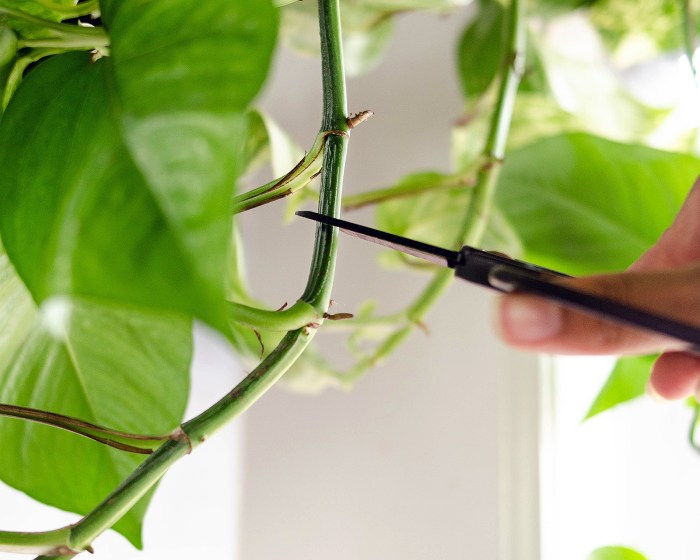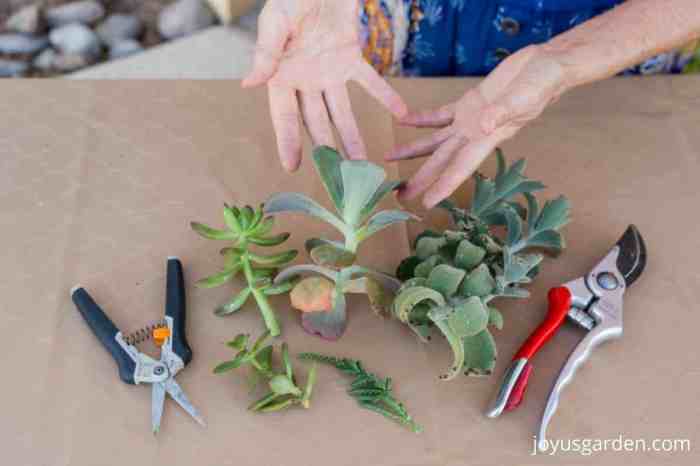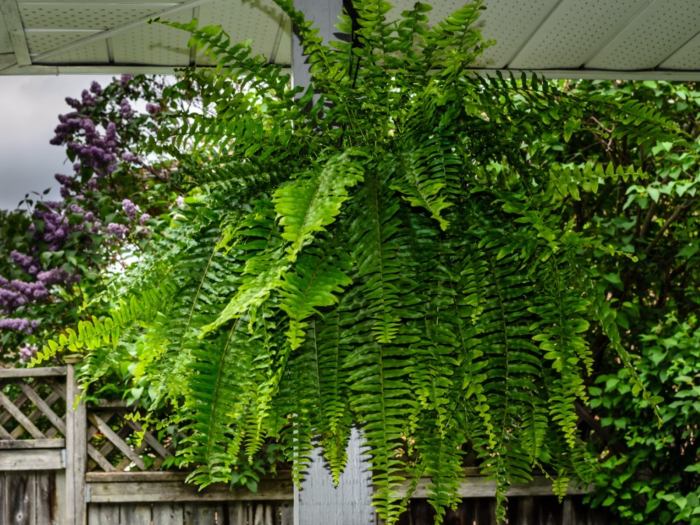How to trim hanging plants – Trimming hanging plants is an essential task for maintaining their beauty and health. By following the right techniques and using the proper tools, you can keep your hanging plants looking their best and thriving for years to come.
This comprehensive guide will provide you with everything you need to know about how to trim hanging plants, from choosing the right tools to following step-by-step trimming procedures. We’ll also discuss special considerations for specific plant varieties and troubleshooting common trimming problems.
Understanding Hanging Plant Trimming Techniques

Maintaining healthy and aesthetically pleasing hanging plants requires proper trimming techniques. Pruning, pinching, and shaping are commonly used methods, each with its advantages and disadvantages.
For those who love hanging plants, regular trimming is crucial for maintaining their health and aesthetics. Similar to trimming hanging plants, trimming cilantro plants also requires specific techniques to encourage healthy growth and prevent overcrowding. By learning how to trim both hanging plants and cilantro plants effectively, you can ensure the vitality and beauty of your indoor greenery.
Pruning
Pruning involves removing unwanted stems, branches, or leaves to control plant size, shape, and encourage new growth. It promotes air circulation, reduces overcrowding, and improves overall plant health. However, excessive pruning can weaken the plant and delay flowering.
Pinching
Pinching is a gentle technique where the growing tips of stems are pinched off. This encourages bushier growth and prevents plants from becoming leggy. It is ideal for trailing plants or those with dense foliage. However, it can be time-consuming and requires regular maintenance.
Shaping
Shaping involves trimming specific parts of the plant to create a desired shape or form. It is commonly used for topiary or to train plants to grow in a particular direction. While shaping can enhance the aesthetic appeal, it can also be challenging and requires a skilled hand.
Tools and Equipment for Hanging Plant Trimming
Trimming hanging plants requires specific tools to ensure precision and safety. Understanding the features and benefits of different tools is essential for effective trimming.
Shears
Shears are ideal for trimming small stems and leaves. Look for shears with sharp, pointed blades that can easily cut through plant material. Ergonomic handles provide comfort during extended use.
Scissors
Scissors are versatile tools for trimming both small and large stems. Choose scissors with sharp, curved blades for precise cutting. Long handles offer leverage for cutting thicker stems.
Pruning Saws, How to trim hanging plants
Pruning saws are necessary for removing large branches or woody stems. Choose saws with sharp, durable blades that can withstand heavy-duty use. Extendable handles allow for trimming at various heights.
Additional Considerations
When selecting tools, consider the plant variety being trimmed. Delicate plants may require smaller, finer tools, while larger plants may need more robust equipment. It’s also important to keep tools clean and sharp to prevent damage to plants.
Step-by-Step Trimming Procedures
Trimming hanging plants is a crucial aspect of their care and maintenance. By following a comprehensive guide, plant owners can ensure their hanging plants remain healthy and visually appealing. The process involves understanding different plant shapes and sizes and adopting specific trimming techniques to maintain the desired form and encourage healthy growth.
Preparing for Trimming
Before trimming, gather the necessary tools, including sharp, clean shears or pruning snips, gloves, and a bucket or container for discarded plant material. Ensure the plant is well-watered and free of pests or diseases.
Trimming Techniques
- Tip pruning:Involves removing the growing tip of a stem to encourage lateral branching and bushier growth.
- Cutting back:Removing a portion of a stem or branch to reduce overall plant size or shape.
- Deadheading:Removing spent flowers or seed heads to prevent seed production and promote new growth.
- Pinching:Removing the growing tip of a stem with your fingers or nails to stimulate branching and fullness.
Trimming Different Plant Shapes and Sizes
Trailing plants:Trim long, trailing stems to control growth and prevent tangling. Remove any dead or damaged leaves or stems.
Cascading plants:Cut back overgrown stems to maintain a graceful, cascading effect. Remove any crossing or rubbing branches.
Vining plants:Train vines by trimming them to the desired length and shape. Remove any suckers or side shoots that detract from the main vine.
Large hanging baskets:Trim the outermost stems to maintain a balanced and manageable size. Remove any dead or diseased foliage.
Small hanging baskets:Trim sparingly to prevent overgrowth. Focus on removing any dead or damaged leaves or stems.
Maintaining Plant Form and Encouraging Growth
Regular trimming helps maintain the desired plant form and encourages healthy growth. By removing overgrown stems and leaves, plants can focus their energy on producing new, vibrant growth. Additionally, trimming promotes air circulation, reducing the risk of pests and diseases.
Special Considerations for Specific Plant Varieties

Different hanging plant varieties have unique trimming requirements. Understanding these specific needs is crucial for optimal growth and visual appeal.
Hanging plants can add a touch of elegance to any home, but they require regular trimming to maintain their shape and health. When trimming hanging plants, it’s important to use sharp, clean shears and to remove any dead or damaged leaves.
You should also trim back any stems that are too long or that are growing in the wrong direction. If you have basil plants in pots, you can use the same techniques to prune them. For more detailed instructions on how to prune basil plants in pots, click here . Once you’ve finished trimming your hanging plants, they will be ready to thrive and add beauty to your home.
Ferns
Ferns have delicate fronds that require gentle handling. Trim only dead or brown fronds, as removing healthy ones can stunt growth. Use sharp, clean shears to avoid tearing or damaging the fronds.
When trimming hanging plants, it’s important to remove dead or damaged leaves and stems to promote healthy growth. Similarly, when trimming zucchini plants, remove any yellowing leaves or stems to encourage the plant to focus its energy on producing fruit.
For detailed instructions on trimming zucchini plants, visit how to trim zucchini plants . By following these tips, you can ensure that your hanging plants and zucchini plants thrive.
Succulents
Succulents store water in their leaves and stems, making them prone to overwatering. Trim sparingly, removing only dead or diseased leaves or stems. Avoid cutting into healthy tissue, as this can create an entry point for pathogens.
Trailing Vines
Trailing vines can become unruly and leggy. To promote fullness and encourage new growth, trim the tips of stems regularly. This encourages lateral branching and creates a bushier appearance.
Troubleshooting Common Trimming Problems: How To Trim Hanging Plants

Trimming hanging plants can be a rewarding task, but it can also come with its share of challenges. Here are some common problems that can occur during trimming and how to solve them:
Over-Trimming
Over-trimming is one of the most common problems that can occur during trimming. This happens when too much foliage is removed, leaving the plant looking bare and unbalanced. To avoid over-trimming, it is important to trim only a small amount of foliage at a time and to take breaks to assess your progress.
Uneven Growth
Uneven growth can occur when one side of the plant receives more light than the other. This can cause the plant to grow lopsided. To prevent uneven growth, it is important to rotate the plant regularly so that all sides receive equal amounts of light.
Pest Infestations
Pest infestations can also be a problem during trimming. Pests can damage the leaves and stems of the plant, making it look unhealthy. To prevent pest infestations, it is important to inspect the plant regularly for pests and to take steps to control them if necessary.
Summary

With a little care and attention, you can keep your hanging plants looking their best and enjoying them for many years to come. So what are you waiting for? Get started today!
Detailed FAQs
How often should I trim my hanging plants?
The frequency of trimming will vary depending on the type of plant and how quickly it grows. As a general rule, you should trim your hanging plants every few months or as needed to remove dead or damaged leaves and stems.
What are the best tools for trimming hanging plants?
The best tools for trimming hanging plants are sharp shears or scissors. You may also need a pruning saw for thicker stems. Be sure to choose tools that are the right size for the job and that are made of durable materials.
How do I trim different types of hanging plants?
Different types of hanging plants have different trimming needs. For example, ferns should be trimmed by removing dead or damaged fronds. Succulents should be trimmed by removing any dead or dying leaves or stems. Trailing vines should be trimmed by cutting back long stems to encourage bushier growth.